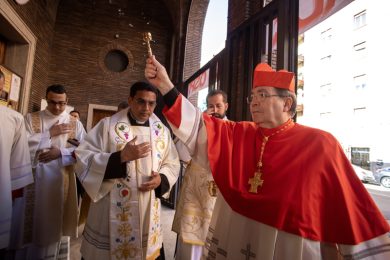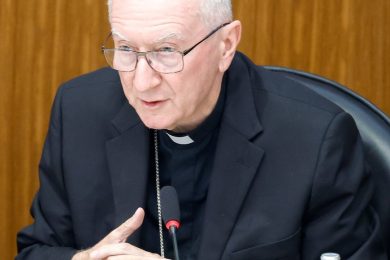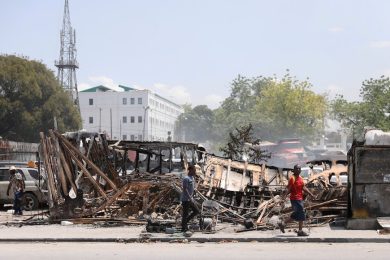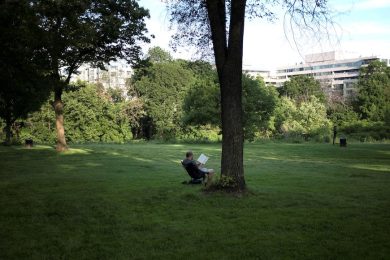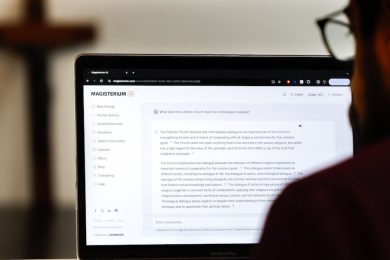The process of selecting a new prioress at St. Benedict’s Monastery in St. Joseph is a sacred undertaking.
Beginning as far back as November 2015, a group was formed called the Discernment and Calling Forth of Leadership Committee. This group is co-chaired by Benedictine Sisters Karen Rose and Eunice Antony, who helped explain the steps in the process.
“The process for electing a new prioress is as much a prayer as a process, or let’s say ‘a process wrapped in prayer and discernment,’” Sister Eunice said.
One of the committee’s first agenda items was to compose a prayer for the discernment of the whole community. Benedictine Sister Judy Kramer wrote the prayer, which was prayed at committee meetings as well as in personal prayer.

“We believe that electing a new prioress is a gift and responsibility. The prioress is believed to ‘hold the place of Christ’ in a monastic community,” Sister Eunice said.
To prepare for the election, the committee invited the community to read documents and provided guide questions for discussion in small groups.
Benedictine Prioress Michaela Hedican regularly invited the community to reflect on a deeper understanding of their Benedictine vocation and extended the challenge to live what was promised at their profession.
“We are about discernment, listening, sorting and sifting what we hear the spirit saying,” Sister Eunice said.
By the fall of 2016, the community worked together to compose a list of “direction statements.”
“The purpose is to agree, in very broad terms, what we want the focus of the community to be in the next six years,” said Sister Karen. “The statements relate to how we respond at this time in our history to the Gospel call and the Rule of St. Benedict. It includes things like how we live our communal life of prayer and service, and how we respond to the world.”
Once the direction statements were agreed upon by the community, they then began to look at what qualities a leader might need to bring forth those changes. They invited two outside facilitators, Benedictine Sisters Kathryn Huber of Ferdinand, Indiana, and Aileen Bankemper of Covington, Kentucky, to guide them in a more formal process.
“Imagine a room full of women, talking, listening, sharing in silence for a weekend in January, and another weekend in February. Our mantra, written by Sisters Delores Dufner and Christine Manderfeld, ‘Come, Spirit of Wisdom, open the ears of our hearts,’ was sung often, reminding us that this is the work of the spirit in, with and through us,” Sister Eunice said.
By the end of January, the community had surfaced six names.
“In February, the first day began with re-looking at the qualities needed and getting back into the discernment mode,” Sister Karen explained. “In the afternoon, the six women each presented to the community. They had been given questions to think about and base their presentations on by the facilitators. These included identifying the gifts and areas of growth they would bring to a leadership role.”
The following day, the community posed questions to the six sisters based on what they heard.
“Sisters answered the questions honestly and were very supportive of one another. In the afternoon, we began the process of ‘testing’ through a system of written preferences to see if one of the six was starting to surface as the person called. When we reached the point where this seemed clear, we proceeded to the canonical election,” Sister Karen said.
This is the point at which the prioress is officially elected. The presider, in this instance Sister Agatha Muggli, vice president of the Federation of St. Benedict, calls the Canonical Election Chapter and swears in the sister designated as secretary of the canonical election and those designated as tellers (her assistants). For this election, the secretary was Benedictine Sister Jeanne Marie Lust. Sisters cast their ballots by writing the name of the sister they think is called to be prioress.
“As this has been a process of communal discernment, this may not be the person whom a sister originally might have favored to be prioress,” Sister Karen said. “We have listened for where the spirit is leading us communally, which includes the notion that we may personally be called to let go of what we individually want. However, we are not obliged to write the name of the person who seems to be the communal choice. It is a free choice on the part of each sister.”
The ballots are collected by ushers, delivered to the secretary and tellers, counted and verified. When these procedures are complete, the outcome is announced. The presider asks the sister chosen by the community if she is willing to serve and then the community moves into a rite of acceptance where the community accepts the prioress-elect and pledges support.
Afterward, a reception is held and sisters greet the new prioress-elect.
“There was a sense of recollection, of prayer, of peace throughout the process that can only be explained as the work of the Holy Spirit,” Sister Eunice said.
“Approximately 175 women can come together and call forth from their midst the leader whom they believe is meant to serve as prioress. It was a powerful experience. It is of God.”




